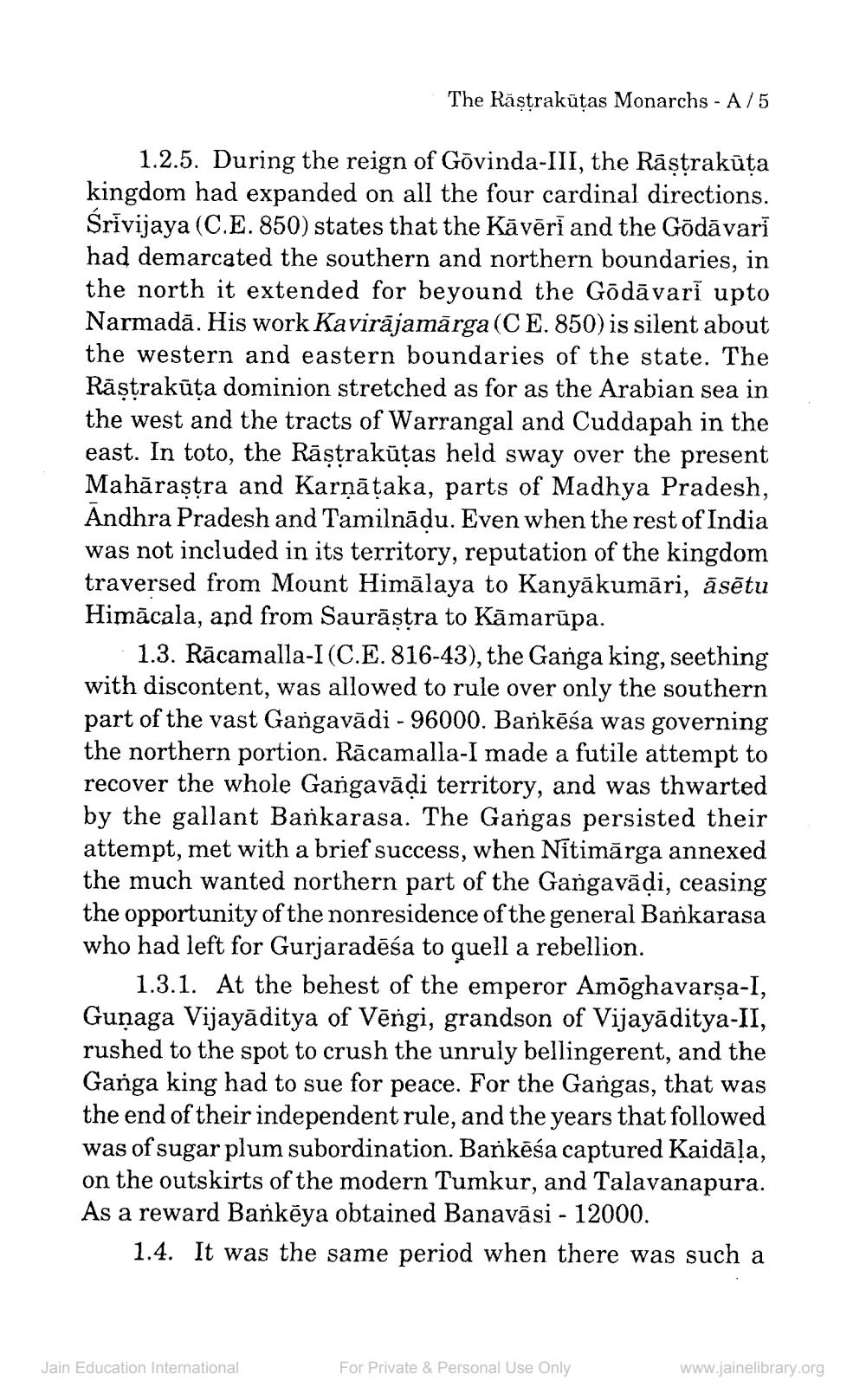________________
The Răstrakūtas Monarchs - A/5
1.2.5. During the reign of Govinda-III, the Rāstrakūta kingdom had expanded on all the four cardinal directions. Srivijaya (C.E. 850) states that the Kāvēri and the Gödāvari had demarcated the southern and northern boundaries, in the north it extended for beyound the Godāvari upto Narmadā. His work Kavirājamārga (CE. 850) is silent about the western and eastern boundaries of the state. The Rāştrakūta dominion stretched as for as the Arabian sea in the west and the tracts of Warrangal and Cuddapah in the east. In toto, the Rāştrakūtas held sway over the present Mahārastra and Karņāțaka, parts of Madhya Pradesh, Andhra Pradesh and Tamilnādu. Even when the rest of India was not included in its territory, reputation of the kingdom traversed from Mount Himālaya to Kanyākumāri, āsētu Himācala, and from Saurāṣtra to Kāmarūpa.
1.3. Rācamalla-I (C.E.816-43), the Ganga king, seething with discontent, was allowed to rule over only the southern part of the vast Gangavādi - 96000. Bankēsa was governing the northern portion. Rācamalla-I made a futile attempt to recover the whole Gangavādi territory, and was thwarted by the gallant Bankarasa. The Gangas persisted their attempt, met with a brief success, when Nitimărga annexed the much wanted northern part of the Gangavādi, ceasing the opportunity of the nonresidence of the general Bankarasa who had left for Gurjaradēśa to quell a rebellion.
1.3.1. At the behest of the emperor Amõghavarşa-I, Gunaga Vijayāditya of Vēngi, grandson of Vijayāditya-II, rushed to the spot to crush the unruly bellingerent, and the Ganga king had to sue for peace. For the Gangas, that was the end of their independent rule, and the years that followed was of sugar plum subordination. Bankēśa captured Kaidāļa, on the outskirts of the modern Tumkur, and Talavanapura. As a reward Bankėya obtained Banavāsi - 12000.
1.4. It was the same period when there was such a
Jain Education International
For Private & Personal Use Only
www.jainelibrary.org




